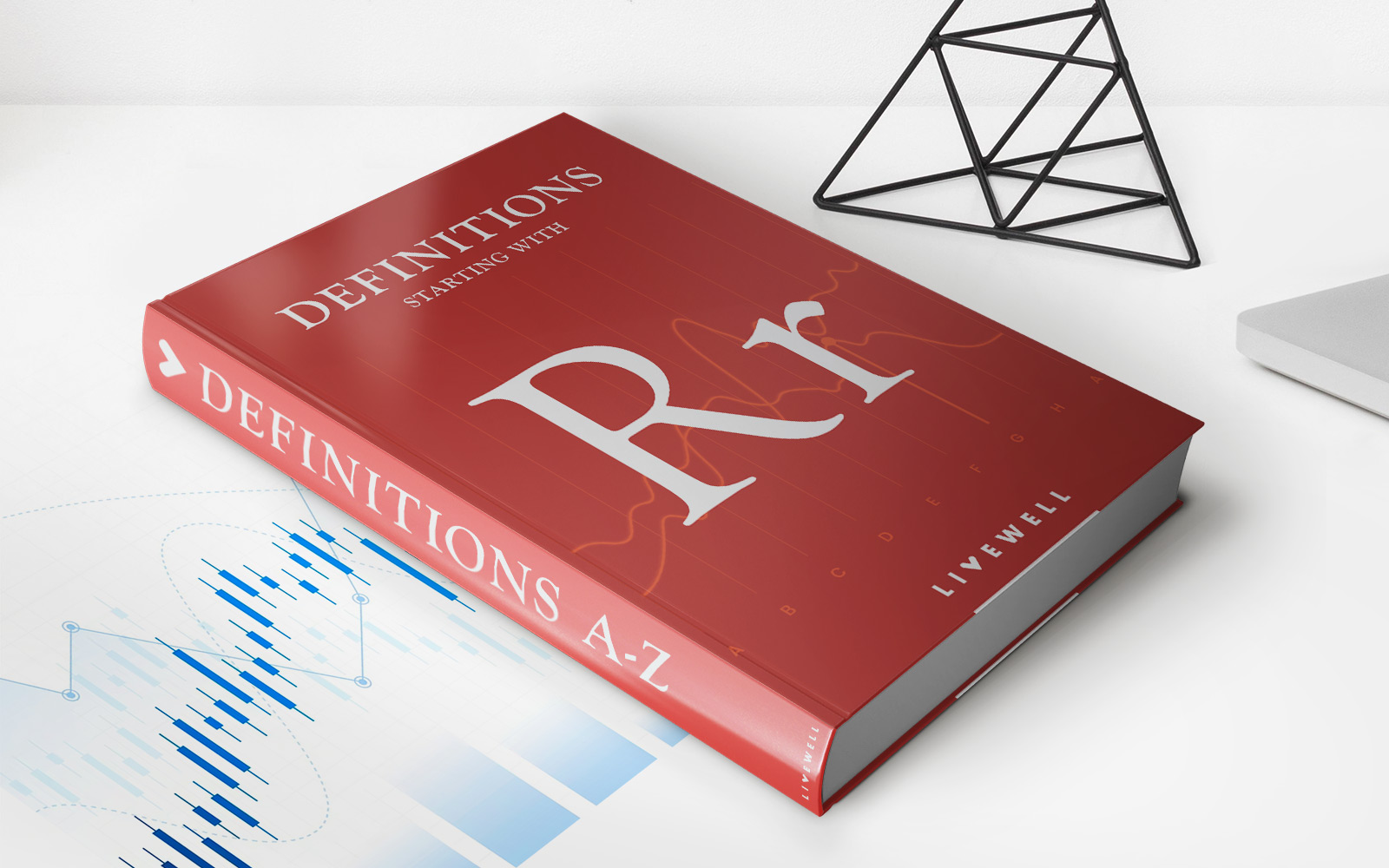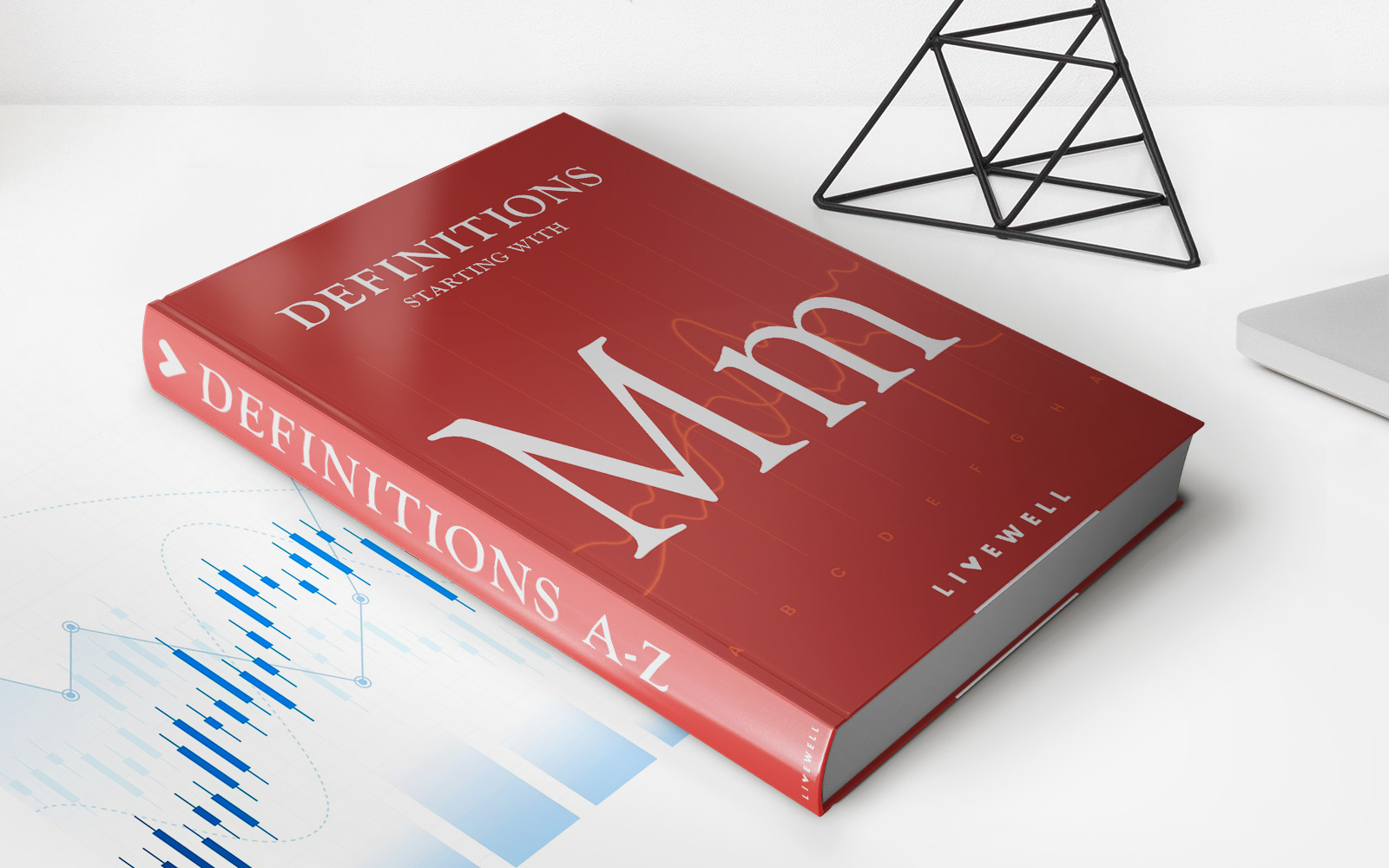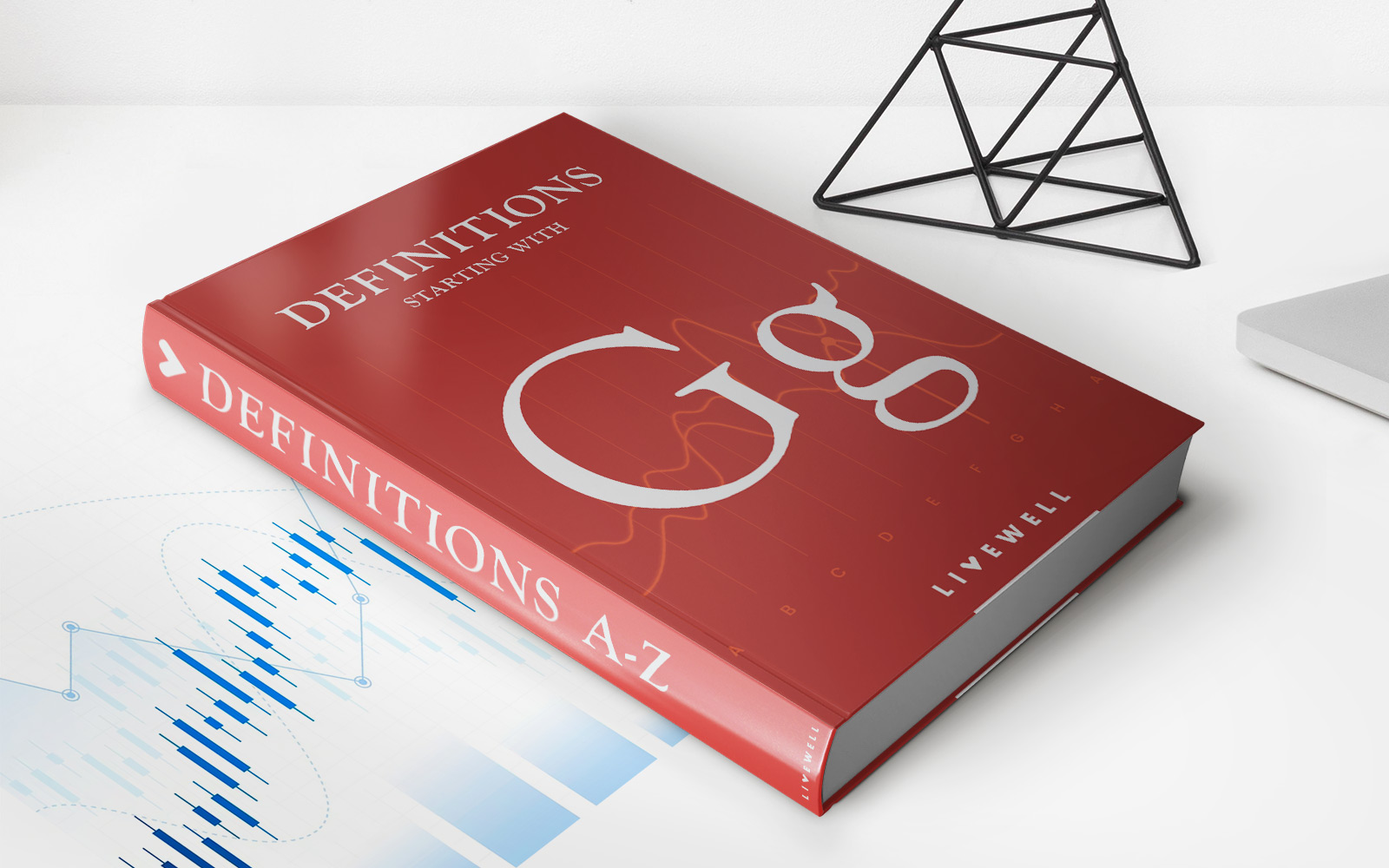

Finance
How Old Can Certificates Of Deposit Be
Modified: December 29, 2023
Learn about certificates of deposit in finance and discover how old they can be. Find out the benefits and strategies for investing in long-term CDs.
(Many of the links in this article redirect to a specific reviewed product. Your purchase of these products through affiliate links helps to generate commission for LiveWell, at no extra cost. Learn more)
Table of Contents
- Introduction
- Understanding Certificates of Deposit (CDs)
- Duration of Certificates of Deposit
- Factors Affecting the Age of Certificates of Deposit
- Advantages of Holding Old Certificates of Deposit
- Disadvantages of Holding Old Certificates of Deposit
- Strategies for Maximizing Returns on Certificates of Deposit
- Conclusion
Introduction
When it comes to investment options, certificates of deposit (CDs) have long been a preferred choice for investors looking for a secure and reliable way to grow their savings. CDs offer a fixed interest rate over a specified period, making them an attractive option for those seeking stability and predictable returns.
However, not all certificates of deposit are created equal. Just like a fine wine, some CDs have been held for years, accumulating interest and becoming “old” in the process. But how old can a certificate of deposit be? And does the age of the CD impact its value or benefits? In this article, we will delve into the world of certificates of deposit and explore the significance of their age.
Understanding the age of a certificate of deposit involves considering several factors, including the duration of the CD, the interest rate, and the terms and conditions set by the issuing financial institution. Additionally, the age of a CD can influence its benefits and drawbacks, as well as the strategies investors can employ to maximize their returns.
In the following sections, we will explore the duration of certificates of deposit, the factors that affect their age, the advantages and disadvantages of holding old CDs, and various strategies for maximizing returns. By gaining a deeper understanding of these concepts, investors can make informed decisions when it comes to their certificate of deposit investments.
Understanding Certificates of Deposit (CDs)
Certificates of Deposit (CDs) are financial instruments offered by banks and credit unions to investors who want to earn a fixed return on their savings over a specific period of time. CDs are considered to be one of the safest investment options available, as they are typically insured by the Federal Deposit Insurance Corporation (FDIC) for up to $250,000 per depositor.
When an individual purchases a certificate of deposit, they agree to deposit a specific amount of money with the financial institution for a predetermined period, known as the maturity date. In exchange, the bank offers an interest rate that remains fixed throughout the duration of the CD.
The duration of a certificate of deposit can vary, ranging from a few months to several years. Short-term CDs typically have lower interest rates compared to long-term CDs. The longer the duration, the higher the interest rate offered by the financial institution.
CDs are known for their low risk and stable returns. Unlike stocks or mutual funds, the value of a certificate of deposit does not fluctuate with market conditions. The principal amount invested, along with the interest earned, is returned to the investor at the end of the CD’s term.
Another key feature of certificates of deposit is their liquidity. While a CD locks in the funds for a set period, investors can still access their money before the maturity date by paying an early withdrawal penalty. The penalty amount is usually based on a percentage of the interest earned or a predetermined fee structure set by the financial institution.
In summary, certificates of deposit offer investors a secure and predictable way to grow their savings. These financial instruments provide a fixed interest rate over a specified period, with the principal amount and interest returned to the investor at the end of the term.
Duration of Certificates of Deposit
The duration of a certificate of deposit (CD) refers to the length of time that the investor agrees to keep their funds deposited with the financial institution. CDs come in various durations, which can range from as short as a few months to as long as several years.
Short-term CDs typically have durations of three months, six months, or one year. These CDs offer lower interest rates compared to their long-term counterparts. Investors who opt for short-term CDs may prefer the flexibility of being able to access their funds sooner or take advantage of potentially higher interest rates in the future.
On the other hand, long-term CDs have durations that can extend from three years to ten years or more. These CDs often offer higher interest rates to compensate for the longer lock-in period. Investors who are looking for stable and predictable returns over an extended period may choose long-term CDs as part of their investment strategy.
It’s important for investors to carefully consider the duration of the CD they choose. While longer-term CDs may offer higher interest rates, they also require a longer commitment of funds. Investors should evaluate their financial goals, liquidity needs, and risk tolerance when deciding on the duration of their CD investment.
Furthermore, it’s crucial to note that once the CD is purchased, the duration is fixed and cannot be changed. If an investor wishes to access their funds before the maturity date, they may face early withdrawal penalties imposed by the financial institution. These penalties are meant to deter investors from withdrawing their funds prematurely and compensate the bank for the loss of anticipated interest earnings.
In summary, the duration of a certificate of deposit determines how long the investor agrees to keep their funds locked in with the financial institution. Short-term CDs offer lower interest rates but greater flexibility, while long-term CDs provide higher interest rates but require a longer commitment of funds. Investors should carefully consider their financial goals, liquidity needs, and risk tolerance when selecting the duration of their CD investment.
Factors Affecting the Age of Certificates of Deposit
The age of a certificate of deposit (CD) is influenced by several factors that can impact its value and benefits. Understanding these factors can help investors make informed decisions when it comes to the age of their CDs. Let’s explore some of the key factors that affect the age of certificates of deposit.
1. Maturity Date: The maturity date of a CD determines its age. This is the date when the CD reaches its full term, and the investor is entitled to receive the principal amount along with the accumulated interest. The longer the duration of the CD, the older it becomes, accumulating more interest over time.
2. Interest Rate: The interest rate offered by the financial institution plays a crucial role in determining the age of a CD. Higher interest rates can accelerate the growth of the CD’s value, making it “older” in terms of accumulated earnings. Conversely, lower interest rates may result in slower growth and a younger CD in terms of accrued interest.
3. Compounding Frequency: Compounding refers to the process of reinvesting the interest earned on a CD, which allows for the growth of both the principal amount and the accumulated interest. The frequency at which the interest is compounded, such as annually, semi-annually, or monthly, can affect the age of the CD. More frequent compounding leads to a quicker accumulation of interest, resulting in an older CD.
4. Early Withdrawal Penalties: In some cases, investors may need to withdraw their funds from a CD before the maturity date. However, this typically results in early withdrawal penalties imposed by the financial institution. These penalties can reduce the accumulated interest and effectively make the CD younger in terms of earnings. The penalty amount varies based on the terms and conditions set by the bank.
5. Renewal or Rollover Options: When a CD reaches maturity, investors often have the option to renew or rollover the investment into a new CD with the same or different terms. Choosing to renew or rollover a CD can affect its age, as the new CD will start fresh with a new maturity date and potentially different interest rates.
It’s important for investors to consider these factors when evaluating the age of their certificates of deposit. Depending on their financial goals and circumstances, factors such as the maturity date, interest rate, compounding frequency, early withdrawal penalties, and renewal options can all impact the age and value of their CD investments.
Advantages of Holding Old Certificates of Deposit
Having old certificates of deposit (CDs) can offer several advantages for investors. These advantages stem from the accrued interest and the length of time the CD has been held. Let’s explore some of the benefits of holding old CDs:
1. Increased Interest Earnings: One of the primary advantages of holding old CDs is the opportunity for increased interest earnings. Over time, the interest on the CD compounds, meaning that the interest is added to the principal amount, and future interest is calculated based on the new, higher balance. The longer the CD has been held, the higher the accumulated interest, resulting in potentially larger returns for the investor.
2. Enhanced Financial Stability: Old CDs can provide investors with a sense of financial stability. By locking in their funds for an extended period, investors can enjoy a predictable income stream from the interest payments. This can be particularly beneficial for individuals who rely on fixed income or want to ensure a stable financial situation during retirement.
3. Diversification of Investment Portfolio: Holding old CDs can contribute to diversification within an investment portfolio. CDs offer low-risk investment options, as the principal amount is protected and insured by the Federal Deposit Insurance Corporation (FDIC) for up to $250,000 per depositor. By diversifying their investments and including old CDs alongside other asset classes, investors can mitigate risk and create a well-rounded and balanced portfolio.
4. Potential for Higher Interest Rates: Older CDs may have been purchased at a time when interest rates were higher. In a declining interest rate environment, having an older CD with a more favorable rate can be advantageous. This means that the investor continues to earn interest at a higher rate, while new CDs would be subject to the lower, prevailing rates.
5. Flexibility in Interest Rate Negotiation: In some cases, financial institutions may offer flexibility in negotiating the interest rates on old CDs. If the market interest rates have increased significantly since the CD was purchased, investors may have the opportunity to negotiate a higher rate with the financial institution, resulting in even greater returns.
It’s important for investors to assess their individual financial goals and risk tolerance when considering the advantages of holding old certificates of deposit. While old CDs offer several benefits, investors should also consider liquidity needs and potential early withdrawal penalties when making investment decisions.
Disadvantages of Holding Old Certificates of Deposit
While there are advantages to holding old certificates of deposit (CDs), there are also some potential disadvantages that investors should be aware of. These disadvantages primarily revolve around the limited flexibility and potential opportunity costs associated with holding old CDs. Let’s explore some of the drawbacks:
1. Lost Opportunity for Higher Returns: Holding old CDs means that the funds are tied up for an extended period. This can limit an investor’s ability to take advantage of potentially higher returns that may be available in other investment opportunities. If market interest rates rise significantly, investors with old CDs that have lower interest rates may miss out on the chance to earn more favorable returns elsewhere.
2. Lack of Liquidity: CDs are often considered less liquid compared to other investments such as stocks or bonds. While there is a fixed maturity date for the CD, early withdrawal penalties may apply if the investor needs to access the funds before that date. Holding old CDs can restrict an individual’s access to their money, making it challenging to meet unexpected financial needs or take advantage of more favorable investment opportunities that may arise.
3. Decreased Flexibility: By holding old CDs, investors may have limited flexibility to adjust their investment strategy as their financial goals or market conditions change. The predetermined maturity and interest rates of old CDs cannot be modified, which may result in missed opportunities or the inability to align the investment with changing financial objectives.
4. Opportunity Cost of Holding Funds: The funds allocated to old CDs could potentially be utilized in other investment options that offer higher returns. By holding onto old CDs, investors may miss out on the potential growth and income that can be generated from alternative investments, such as stocks, real estate, or mutual funds.
5. Inflation Risk: Holding old CDs for an extended period can expose investors to inflation risk. Over time, the purchasing power of the interest earned on CDs may erode due to rising inflation. This means that the real return, adjusted for inflation, may be lower than anticipated, potentially impacting the value of the investment over the long term.
It’s important for investors to carefully weigh the advantages and disadvantages of holding old certificates of deposit. While the stability and predictable returns of CDs can be appealing, the limited liquidity and potential opportunity costs associated with holding them for an extended period should also be considered when making investment decisions.
Strategies for Maximizing Returns on Certificates of Deposit
While certificates of deposit (CDs) are known for their stability and security, investors can still employ strategies to maximize their returns. By being strategic and proactive, investors can make the most of their CD investments. Here are some strategies to consider:
1. Shop Around for Competitive Rates: Not all financial institutions offer the same interest rates for CDs. It’s crucial for investors to shop around and compare rates from different banks or credit unions. Look for institutions that consistently offer competitive rates for various CD durations. By doing so, you can secure a higher interest rate that will contribute to greater returns on your CD investment.
2. Consider Longer-Term CDs: Longer-term CDs often come with higher interest rates compared to shorter-term CDs. If you have the flexibility to lock in your funds for a longer period, consider investing in CDs with longer durations. This strategy can potentially yield higher returns over time, particularly if interest rates increase during the duration of your CD.
3. Utilize CD Laddering: CD laddering is a strategy where investors divide their funds into multiple CDs with different maturity dates. By staggering the maturity dates, you can take advantage of higher interest rates in the future or have access to funds at regular intervals. This strategy provides both liquidity and the opportunity to potentially benefit from rising interest rates.
4. Take Advantage of Promotional or Bump-Up CDs: Some financial institutions offer promotional or bump-up CDs, which allow the investor to request a higher interest rate during the term of the CD if rates rise. Taking advantage of these CDs can provide an opportunity to secure higher returns if interest rates increase, while still benefiting from the initial rate if rates remain unchanged.
5. Consider CD Options with Inflation Protection: Inflation can erode the purchasing power of the interest earned on CDs. To mitigate this risk, investors can explore CDs that offer inflation protection. These types of CDs adjust the interest rate based on changes in the inflation rate, ensuring that the returns keep pace with rising prices.
6. Reinvest Interest and Dividends: When the interest or dividends earned on a CD mature and are paid out, consider reinvesting them into another CD or investment vehicle. By reinvesting the earnings, you can compound your returns and potentially further grow your investment over time.
7. Avoid Early Withdrawal Penalties: To maximize returns, it’s important to avoid early withdrawals that can result in penalties. Make sure to assess your liquidity needs and align the CD maturity dates with your financial goals to avoid having to withdraw funds prematurely and incur unnecessary penalties.
Remember, each investor’s financial situation and goals are unique. It’s essential to consider your own risk tolerance, liquidity needs, and time horizon when implementing any CD investment strategy.
Conclusion
Certificates of deposit (CDs) can be a valuable addition to any investment portfolio, offering stability, security, and predictable returns. The age of a CD, determined by factors such as duration, interest rate, compounding frequency, and withdrawal penalties, can impact its value and benefits.
Holding old CDs can provide several advantages, including increased interest earnings, enhanced financial stability, diversification of investment portfolio, potential for higher interest rates, and flexibility in interest rate negotiation. These benefits can contribute to long-term financial goals and help investors secure steady income streams.
However, there are also disadvantages to holding old CDs. These include the potential opportunity cost of higher returns in other investment options, limited liquidity, reduced flexibility, and inflation risk. Investors should carefully evaluate their risk tolerance, financial objectives, and liquidity needs when deciding to hold old CDs.
To maximize returns on certificates of deposit, investors can implement various strategies. These include shopping around for competitive rates, considering longer-term CDs, utilizing CD laddering techniques, taking advantage of promotional or bump-up CDs, exploring inflation-protected CD options, reinvesting interest and dividends, and avoiding early withdrawal penalties.
In conclusion, understanding the factors that affect the age of certificates of deposit and implementing effective strategies can help investors maximize their returns and achieve their financial goals. CDs can play a crucial role in a diversified investment portfolio, offering stability and predictable income. By carefully considering the advantages and disadvantages, investors can make informed decisions to optimize their CD investments and secure a strong financial future.














